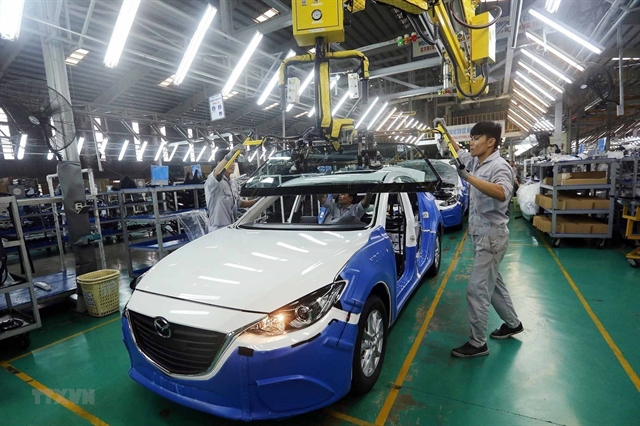Several automakers are considering assembling their best-selling models in Việt Nam due to the Government’s policy of zero import tariffs on components and a 50 per cent reduction in registration fees.

Several automakers are considering assembling their best-selling models in Viet Nam due to the Government’s policy of zero import tariffs on components and a 50 per cent reduction in registration fees.
On July 20, Honda Viet Nam introduced the fifth-generation CR-V 2020 and will start selling cars built here from August 11 after three years importing completely built-up units from Thailand for distribution in Viet Nam.
Mitsubishi Viet Nam on the same day also introduced its best-seller Xpander assembled at its plant in the southern province of Binh Duong and started selling to customers in August after nearly two years importing fully built-ups from Indonesia.
Domestically-assembled Mitsubishi Xpanders will cost VND30-40 million (US$1,300-1,720) less than imported versions due to registration fees being cut in half.
Previously, in mid-2019, Toyota Viet Nam moved to assemble Fortuner models in Viet Nam while other models remained imported.
Teh Kim Hwa, general director of TC Services Vietnam that distributes products of British automobile company MG Motor in Viet Nam, was quoted by Vietnam News Agency as saying that MG’s SUV MG HS and MG ZS models would be imported fully built-ups from China first then from Thailand from November this year to enjoy the zero import tariffs.
He added that some MG models were to be assembled at a plant in Da Nang from 2021.
Although the 50 per cent reduction in registration fees for domestically-produced cars is only set to last until the end of this year, the policy has encouraged automakers to assemble models in Viet Nam. The policy was launched amid the COVID-19 pandemic to promote sales of domestically-produced cars.
The policy took effect from July 10, meaning import tax would be zero for automobile components which could not be produced domestically.
According to statistics of the Viet Nam Automobile Manufacturers’ Association (VAMA), there are about 30 models with sales from 1,000 to more than 27,000 units per year, 24 of which had sales from 3,400 units per year, eligible for the policy of zero import tariffs on components for assembly in Viet Nam.
The best-seller was Toyota Vios with annual sales of 27,000 units, followed by Mitsubishi Xpander with 20,000 units, Hyundai Accent with 19,700 units and Hyundai Grand i10 with 18,000 units.
Among the 24 models with sales from 3,000 units per year, six were imported, namely Mitsubishi Xpander, Toyota Fortuner, Ford Ranger, Honda CRV and Ford Everest. Now, Mitsubishi Xpander and Honda CRV are assembled in Viet Nam.
Automakers with the minimum output of 8,500 units per year and 3,500 units per year for each model are eligible for the policy of zero import tariffs on components for assembly in Viet Nam.
The minimum output figures must be raised to 13,500 and 5,000, respectively by the end of 2022. — VNS





